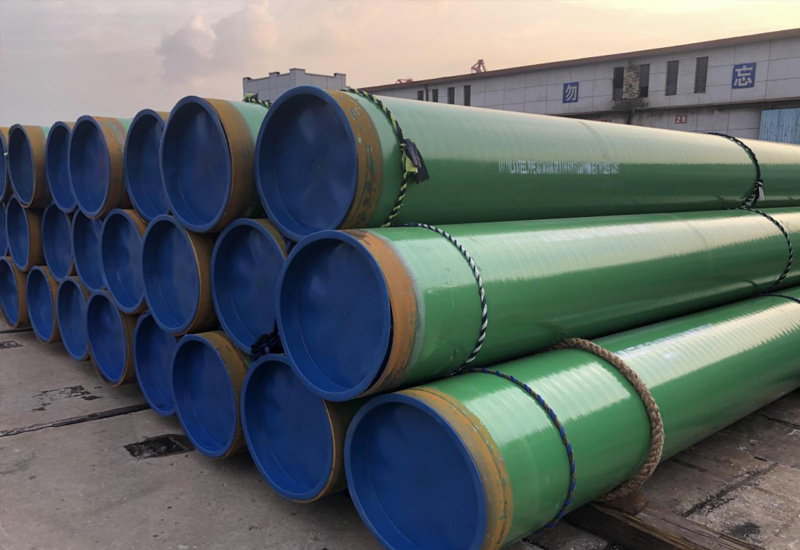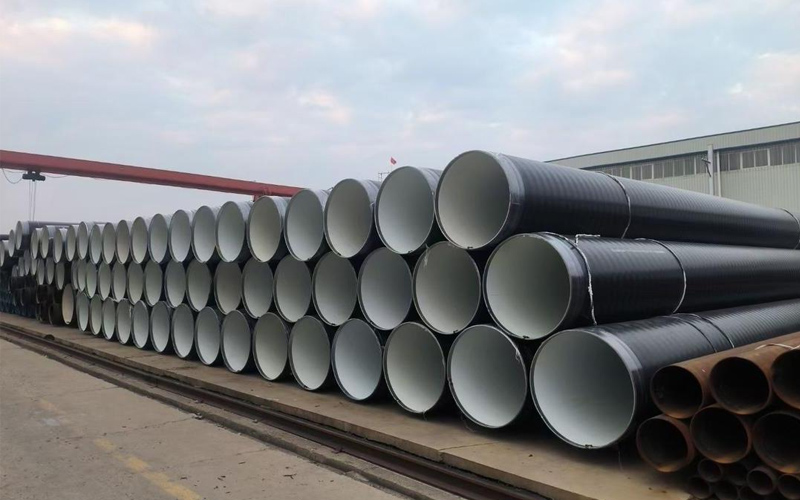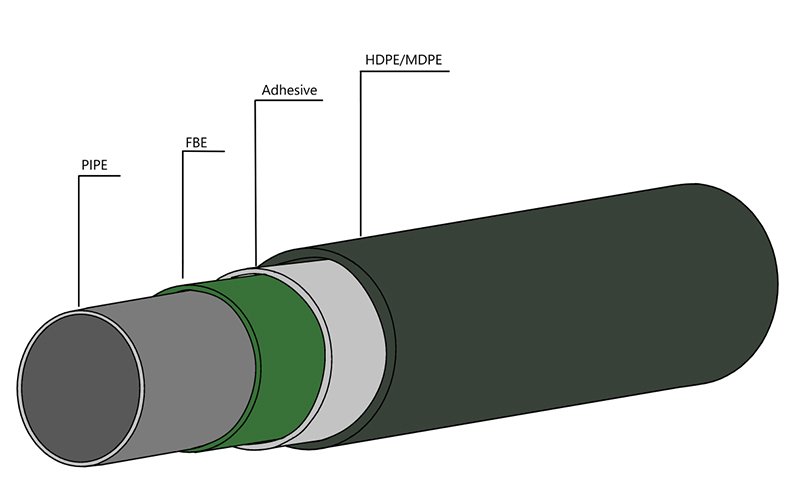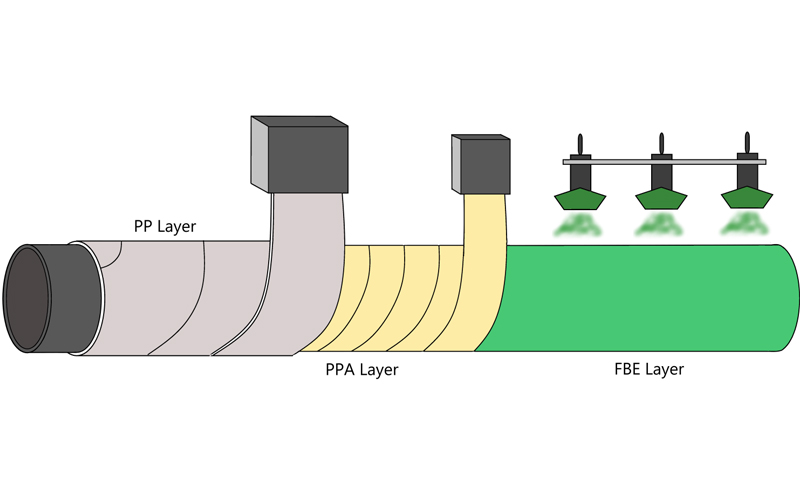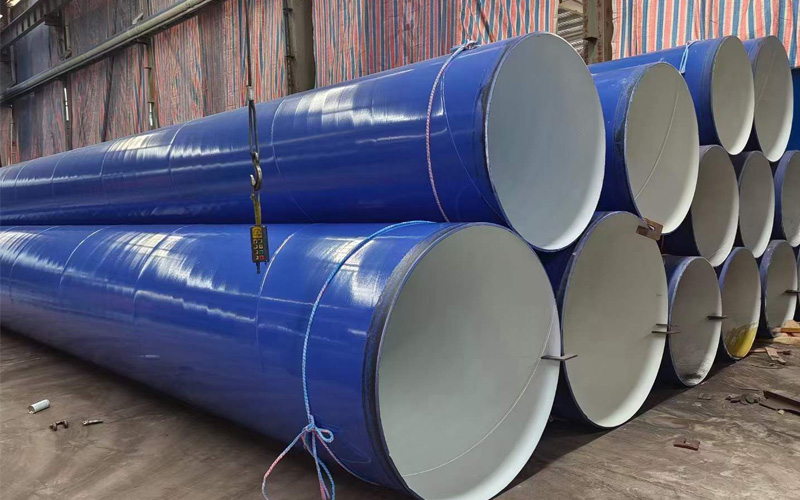Seamless vs Welded Steel Pipe: How to Choose?
In the field of pipeline systems, seamless steel pipes and welded steel pipes are the two main types, which are used in countless industrial, architectural and infrastructure projects. For engineers, technical consultants and procurement professionals who are in charge of product selection, understanding their fundamental differences in manufacturing, performance and cost is key to ensure the efficiency, safety and cost-effectiveness of the project. This guide provides a comprehensive comparison to help you make informed project-specific decisions.
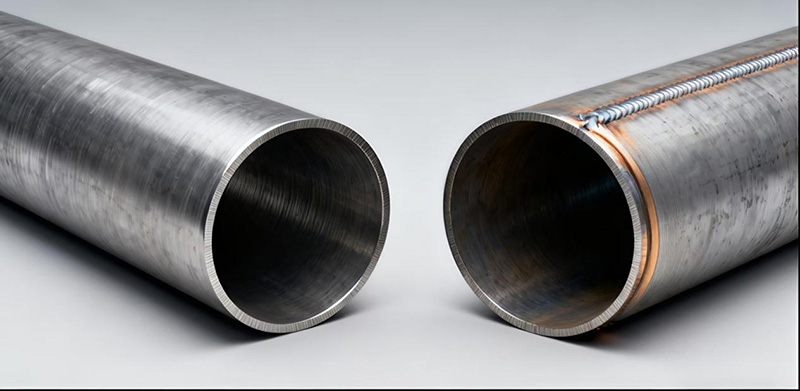
Comparison of manufacturing processes
Manufacturing technology is the root of differences between seamless steel pipe and welded steel pipes, which shapes their unique performance and applications.
Seamless steel tube
The production of seamless steel tube adopts complex piercing and hot rolling process. It starts from a solid billet and is heated in a furnace to improve plasticity. The heated billet is pushed through a piercer (with a mandrel) to produce a hollow “billet” or “shell”. The bloom then undergoes multiple hot-rolling passes to reach the required outer diameter and wall thickness. Finally, it is cooled, straightened, cut and surface treated (e.g., Pickling, zinc plating) to form finished pipe. A key feature is that the seamless pipes has no weld, which eliminates the potential weakness in welded joints.
Welded steel tube
Unlike seamless pipes, welded pipes are made from steel plates or coils of steel plates. First, cut the raw materials into proper size and clean them (remove rust/oil stains that damage the welding quality). Next, processed steel is sent to a molding machine and rolled into a cylinder by a rollers. Once formed, steel edges are connected by welding-common methods for welding pipes include resistance welding (ERW), longitudinal submerged arc welding (LSAW) and spiral submerged arc welding (SSAW).
The LSAW Pipe manufacturing process is notable for large-diameter welded pipes. Here, a flat steel plate is bent into a cylinder with a longitudinal joints. Submerged arc welding is suitable for internal and external welds: granular flux covers the arc and welding pool (to prevent pollution), and allows deep penetration of large current and strong joints. Post-welding, LSAW pipes undergo strict quality checks (e.g., Ultrasonic/radiographic testing) plus straightening, cutting and coating. For all welded pipes (ERW, LSAW, SSAW), the core is joining steel edges into a cylinder—weld quality directly impacts final pipe performance.
Key Performance Differences
Manufacturing differences lead to significant performance differences between seamless and welded pipelines, forming their use cases.
Pressure Rating
Seamless pipes generally have a theoretical advantage of high pressure: there are no welded joints (there may be micro-defects such as air holes or cracks) In the high pressure environment, these defects in welded pipeline could expand, leading to leakage or bursting. For example, high-pressure boilers (internal pressure can reach tens of MPa, extreme temperature), seamless tubes are preferred for stable performance. However, advanced welding tech—especially mature LSAW Pipe manufacturing process and strict quality control—lets high-quality welded pipes meet medium-high pressure needs (e.g., Some oil/gas pipelines are heat treated with LSAW pipes). Nevertheless, seamless pipes are still more reliable for ultra-high pressure.
Dimensional Tolerance
Welded pipes usually have more uniform wall thickness and smaller outside diameter tolerance. Advanced molding/welding equipment (e.g., ERW lines) control the wall thickness deviation within 5%. In contrast, seamless tubes may have large deviations due to uneven perforation/rolling. The tight tolerance of welded pipes simplifies the installation and improves the sealing performance of systems with precision valves/connectors.
Cost & Lead Time
For the purchasing team, welded pipes is excellent in this respect. They have higher utilization rate of raw material (steel plate/coil produces less waste than seamless billets). Their manufacturing is simpler: take the LSAW Pipe manufacturing process—though multi-step, lines enable continuous large-scale production, cutting unit costs. Seamless production is more complicated (requires advanced equipment) and increases the costs. Delivery time: welded pipes will be shipped within a few weeks (materials are easily available and the cycle is short); Seamless pipes need several months (complicated process, especially customized specifications). This makes welding pipeline cost/time efficient under the tight budget/schedule.
Shape & Length
Welding pipelines has greater flexibility. They can be made in extra-large diameters (hard for seamless pipes) —LSAW pipes, for example, exceed 2000 mm OD, ideal for large water projects, municipal networks, and offshore oil/gas lines. They may also be customized in lengths (e.g., SSAW pipes up to tens of meters long), reducing joints (reducing installation cost/leakage risk). Seamless pipes are limited by the size of billet/equipment: most seamless pipes have an outer diameter of less than 600 mm and length of 6-12 meters, which is suitable for small and medium-sized systems with limited space/flow.
Application-based Selection Guide
Choose between seamless and welded pipes according to the needs of the project (pressure, temperature, medium, environment and budget).
When to choose seamless steel pipes
Seamless pipes is the first choice for projects with high pressure, high temperature and high reliability.
· High pressure boilers (power plants): delivering high temperature/high pressure steam to turbine (above 30 MPa, > 400 degrees Celsius); Steam corrosion/erosion resistance.
· Hydraulic systems (machinery): avoid leakage/failure (which is very important for operation), and have strong compression resistance.
· Key oil/natural gas pipelines (desert/polar regions): prevent welding failure due to temperature change/influence when transporting high-pressure natural gas/crude oil.
When to choose welded pipes
Thanks to its cost-effectiveness, accuracy and flexibility, welded pipes are suitable for most medium and low pressure applications.
· Low-medium pressure fluid transportation: domestic water, industrial cooling and compressed air (≤ 10 MPa); Galvanized ERW welded pipes is suitable for residential water use (low cost and convenient installation).
· Structural support: column/beam in steel structures (uniform wall thickness ensures strength).
· Oil/gas well casings: Protect wellbores (large-diameter/custom-length welded pipes like LSAW work well).
· Piling projects (building/bridge): used as pile foundations (high strength, large diameter, transferring load to deep soil).
Conclusion
There are no “better” options, only “more suitable” options for your project. According to the comprehensive evaluation of pressure, temperature, medium, environment and budget, choose. Seamless pipes excel in high-pressure/high-temperature/reliability scenarios; Welded pipes, with advantages in cost, tolerance, shape, and length, suit most low-medium pressure projects and tight budgets/schedules. The LSAW Pipe manufacturing process further expands welded pipes’ use in large-diameter/medium-high pressure apps.
If you are not sure which pipe to choose or have technical problems (e.g., LSAW Pipe manufacturing process applicability, welded pipes’ pressure resistance in special conditions), our experts are ready to help. With many years of industry experience, we’ll choose the best pipeline solution for the unique needs of your project, ensuring success and efficiency.
Share:
Get Your Custom Steel Pipe Quote Today!
Provide us with your project details (like application, specifications, quantity). Our experienced team will respond with a tailored solution and competitive quote within 24 business hours.
Related Articles
ASTM A53 vs. API 5L: A Guide to Selection and Application
Introduction:Technology differences determine success or failure, and selection needs to be “precise”
Steel Density Analysis: Core Differences between Mild and Medium Carbon Steels and Industrial Applications
3LPE coated steel pipe: a solid barrier in the field of industrial corrosion protection
3LPP coated pipe: anti-corrosion guard in high temperature and high pressure environment
FBE steel pipe: the technological armor of the steel defense line
HOT TAGS
latest posts
- ASTM A53 vs. API 5L: A Guide to Selection and Application
- Cracking the Code: What Makes SSAW Spiral Steel Pipes the Engineer’s Top Pick Worldwide
- What is ASTM A252 pipe? Engineering basic solution.
- A Concise Guide to EN 10217: European Standard for Pressure Welded Tubes
- The Hydrostatic Test: Why It’s the Final Defense for API 5L Pipe Integrity




